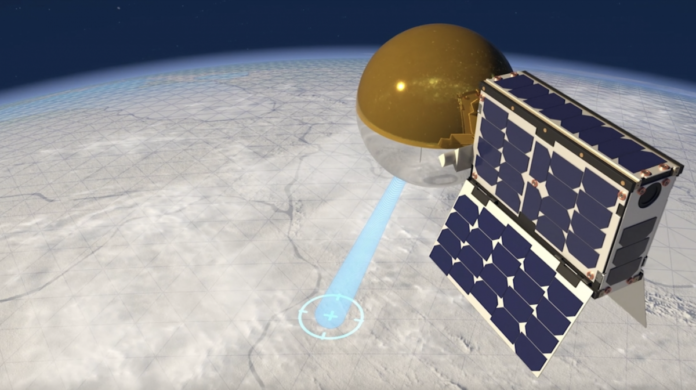Students at the University of Arizona have constructed a cubesat to demonstrate what they hope will be the answer to high-speed, low-cost space communication and data transmission for small satellites.
The two-toned antenna, serving credence to the communication device’s beach ball comparison, will launch in a stowed and folded configuration. Once in Earth orbit, the antenna will inflate using a combination of helium and argon, increasing its initial surface area to provide increased downlink speeds.
The cubesat — “CatSat,” as the students have dubbed it — will serve a dual purpose alongside its novel antenna test. Instruments opposite the beach ball antenna will probe Earth’s ionosphere to study the propagation and changes of high-frequency radio signals above the atmosphere. Together with other onboard components, CatSat’s instruments will send down high-resolution images of our planet at speeds previously unobtainable by comparably sized cubesats.
Related: Cubesats: Tiny payloads, huge benefits for space research
Hilliard Paige, University of Arizona systems engineering student and CatSat’s lead system engineer, sees the antenna concept as a pathfinder for future missions. “Following a successful launch, this inflatable antenna will be the first of its kind in space,” she said in an online post (opens in new tab) from the university.
“The technology demonstrated by CatSat opens the door to the possibility of future lunar, planetary and deep-space missions using cubesats,” echoed University of Arizona professor of astronomy Chris Walker.
Through the University of Arizona’s commercialization efforts via Tech Launch Arizona, Walker co-founded a company called Freefall Aerospace, which developed the beach ball antenna. Walker was also one of the University of Arizona faculty to submit the initial CatSat proposal to NASA under the agency’s Cubesat Launch Initiative in 2019.
That proposal gained NASA’s approval, and CatSat was assigned a launch vehicle — a Firefly Aerospace Alpha rocket, which will lift off from Vandenberg Space Force Base in California and deliver the small satellite to a 340-mile-high (547 kilometers), sun-synchronous orbit. If successful, CatSat’s beach ball antenna will then beam down near real-time images of Earth.
CatSat does not yet have a target launch date, though it’s expected to get one later this year, University of Arizona officials said.
Follow us on Twitter @Spacedotcom (opens in new tab) or on Facebook (opens in new tab).

